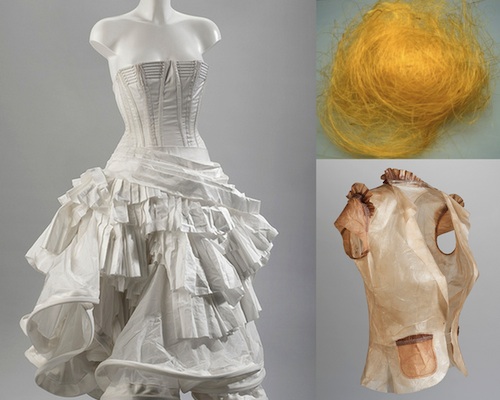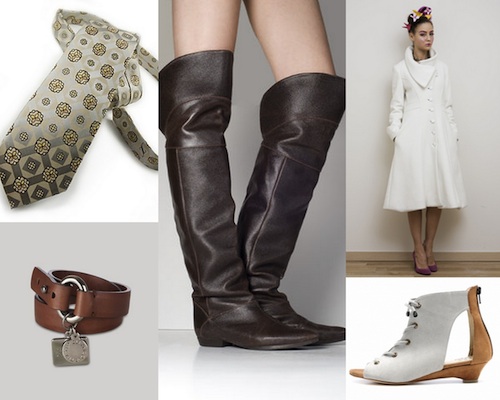While what’s best for our planet is to stop consuming at the rate we are, we can’t avoid the fact that people still want to buy a new pair of shoes once in a while.The key is to invest in quality pieces that you truly love and plan to keep for a long time made from materials that cause the least amount of harm to animals and the environment. If you do some research (through places like Global Action Network, PETA, Veg for Life, Farm Sanctuary, or vegan designers like olsenHaus) it can make all the difference. It is through this research that you will learn that sheep go through a cruel practice called mulesing and later get sent to slaughter (if they haven’t died from infection or heat stroke by then). Cashmere goats get castrated, notched, and dehorned without anesthesia and killed by age two if their coats are not perfect (50-80%), then sold for slaughter after shearing. Silk worms are boiled alive. Down "production," where birds are plucked alive or scalded in boiling water while still conscious, supports the foie gras industry. And of course, the leather industry is directly linked to the meat industry, whether it be represented in that calf-skin (veal) handbag, shearling (lamb skin and fur) boots, or in those kidskin (baby goat) gloves. And this is all just scratching the surface. The lesson here is that everything is connected and vegans don't like to turn a blind eye to that fact.
Luckily, more and more attention is being paid to conscious fashion and more and more small companies are popping up everywhere and growing. Footwear companies like olsenHaus (now sold at Nordstrom!), Cri de Coeur, Neuaura, and Melissa focus on vegan footwear. Stella McCartney avoids leather in her designs, so all of her shoes, belts, and handbags are vegan (but she does use silk, wool, and cashmere in her clothing). Melie Bianco, Matt & Nat, and Gunas are vegan “leather” accessory companies. Vegan coats can be found at Vaute Couture. Jann J. makes great silk-free ties. And of course, many designers who are not vegan, happen to create “accidentally vegan” pieces (like Marc Jacobs’s fabric bags or Givenchy’s jelly sandal). In that case a vegan needs to make the decision of whether they want to support a company that produces non-vegan pieces despite the availability of vegan ones. If the preference is to stick with only eco-conscious labels, check out any of the designers featured at Vancouver’s Eco Fashion Week. Fashion is becoming such a focus in the vegan community that the first annual Vida Vegan Con international blogging conference in Portland this August features a vegan fashion workshop.
It can, however, be pretty challenging to find quality sweaters, scarves, and hats that are not cashmere or wool, and it can be even harder to find blouses and dresses (especially wedding dresses!) that are not silk. But they are out there. (Check out The Cotton Bride and Lindee Daniel.)
With yarn being made out of bamboo, soy, hemp, lyocell, and ramie, cotton and linen (made from flax) are no longer the only plant-based options for knits. Bamboo is incredibly soft, durable, and even antibacterial. Soy is smooth like silk and drapey, with a similar feel as cashmere. Hemp functions much like linen. Lyocell, made from cellulose fibers, is better known as Tencel or modal. Ramie, made from a flowering plant in the nettle family, adds luster to any fabric with which it's blended. Of course, it is advisable to look for organic when possible to avoid the chemicals used in the production of the textiles, both for environmental and health reasons. For more info, TreeWool is a great vegan blog that posts information on the world of vegan knitwear.

polylactic acid dress, DyeCat-dyed fibers, kombucha-bacteria-grown cellulose "leather" jacket
And then there are truly experimental materials out there that show how turning to plants that we normally associate with food can lead us to innovation in the apparel design world.
Suzanne Lee at Central Saint Martins in London is developing cellulose “leather.” Her “Bio-Couture” project uses bacterial cultures in kombucha tea to grow what resembles transluscent leather. Check out a video on her work on The Discerning Brute.
Compostable “Ingeo,” a plastic called polylactic acid (PLA) that’s similar to polyester is manufactured from plants such as corn, wheat, sugar beet, mollases, sugar cane, or rice. Not only does Ingeo not use oil or take centuries to degrade, it can also use up waste from our landfills. And, of course, it makes a fabulous wedding gown as well.
DyeCat is a company that created a way to “dye” polyester or PLA as the fibers are produced, eliminating the need for dyeing in water afterwards, a practice that has lead to dumping of chemicals into bodies of water, causing massive environmental damage and health hazards for workers.
If some of these options seem too expensive and/or out-of-reach, fear not and keep in mind that doing the best you can is better than doing nothing and you can always aspire to do more. The key is to buy products made from plants whenever possible (organic being ideal) and to stop adding to the consumerism cycle. Shop vintage. Buy kapok instead of down. Avoid PVC. If not made of plants, buy recyclable materials, then actually recycle them. Compost fabric. Donate clothing. Support small-scale designers. Educate yourself.

